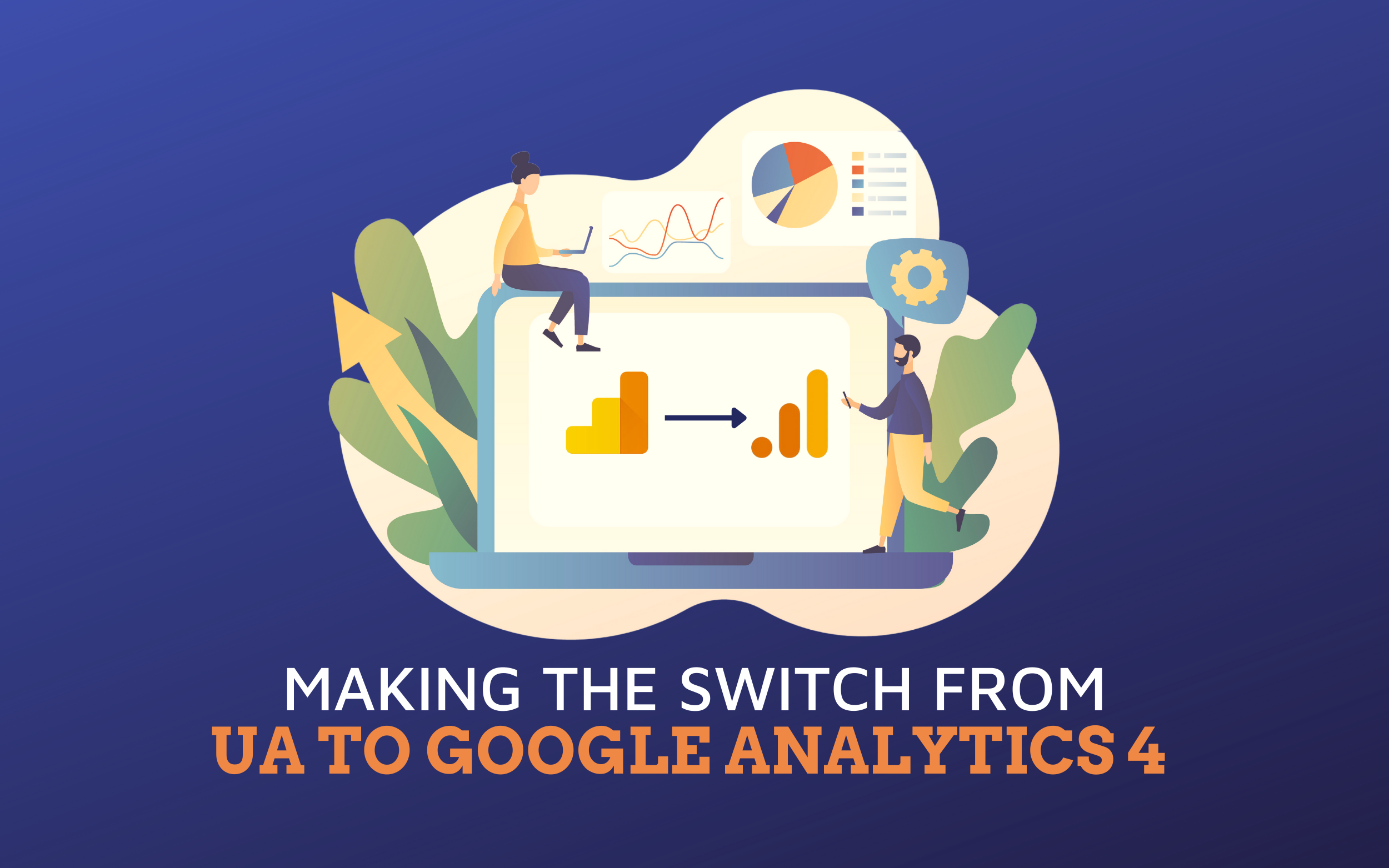Making the Switch from UA to Google Analytics 4

Adapting to change. It’s just part of doing business. And when it comes to understanding your customer’s behavior, keeping up that change is vitally important.
A few years ago, Google introduced Google Analytics 4 to replace Universal Analytics (UA) to help address the evolving measurement standards to help your business succeed. But what does this mean, and how urgent is it for you to act? Learn what you should be doing to prepare for the retirement of Universal Analytics and the rise of Google Analytics 4.
The Changes with Google Analytics 4
Google announced that UA properties will stop processing new “hits” on July 1, 2023. However, for at least six months after July 1, you will be able to access your historical reports and data on UA. But, before that transition period ends, you should have a plan to shift towards the new system.
Why does the transition matter to you?
While there are other analytics alternatives, over 35 million live sites currently use UA, including 63% of the most popular 100k websites according to BuiltWith. And luckily, Google makes it very simple for those companies to transition to Google Analytics 4 seamlessly.
So, what makes Google Analytics 4 different from UA? The most significant difference is that Google Analytics 4's measurement data model is based on events and parameters. For example, a page view is considered an event, and tracking views and page scrolling are considered parameters. Google Analytics 4 has a long list of events and parameters that are automatically collected, so you don't have to spend the time to collect that information yourself.
Events
Events represent a key data model difference between UA and Google Analytics 4. Whereas each event has a Category, Action, Label and its own hit type in UA, Google Analytics 4 displays every "hit" as an event. This means there is no distinction between hit types. So, when shifting to Google Analytics 4, it's better to rethink your data collection as opposed to porting your existing UA structure to the new system.
What does this mean for you?
Since Google Analytics 4 tracks everything as an event, Google has an easier time tracking how a user interacts with your site across platforms. While UA is built on the idea that page views are the most critical metric, Google Analytics 4 makes tracking a wider range of metrics easier. This will make it simple to follow a customer's journey and provide deeper audience insights.
AI-Powered Insights
Artificial intelligence isn't new to Google, but Google Analytics 4 is expanding its usage to help predict what users are likely to do. This is also good if you're worried about how the extinction of third-party cookies might negatively affect your company. AI helps by retargeting audiences and understanding which users are likely to make a purchase. On top of that, AI can fill in the missing gaps in your standard reports.
What Problems are People Having with Google Analytics 4?
As with anything new, change is difficult, especially when you've become accustomed to the old way of doing things. Here are some of the considerable reservations that businesses are having when it comes to switching from UA to Google Analytics 4.
- Metrics
As we already discussed, Google Analytics 4 has a separate data model from UA. And while different metrics aren't an issue for some, others found comfort in the original model, especially regarding metrics like bounce rate.
- Reports
Whereas UA has 30 available reporting options, Google Analytics 4 has three. While it certainly can be less overwhelming, the concern is that the number of reporting options available wouldn't grasp the complete picture of what's happening on a site.
- Conversion Tracking
While some tracking has become more convenient with Google Analytics 4, many people have had concerns about one of the most important conversion actions – contact form submissions. While it’s still possible, tracking simple form submissions is a much more involved process.
Making the Change to Google Analytics 4
As businesses, we must seamlessly adapt to new changes to succeed. And although it may take some time to get used to, Google Analytics 4 has many positive changes that will ultimately enhance measurement capabilities. Here are the steps your company can follow to make the transition.
- Create Google Analytics 4 Account
- Compare metrics
- Data clean up
- Create necessary business reports
- Run parallel reports
- Pick a date to switch over
To make the process smoother, PALO Creative offers web expertise to assist with the transition and make it as seamless as possible. Contact our team to ensure you don't lose out on any crucial data.
Our Recent Posts
Search
Posts by Tag
- Digital Marketing (77)
- Marketing Strategy (69)
- Agency (55)
- Content Marketing (31)
- Social Media Marketing (29)
- SEO (28)
- News (26)
- Advertising (24)
- Website Design (15)
- branding (14)
- Graphic Design (10)
- AI (4)
- HubSpot (2)
- Web Development (2)
- Business (1)
- Marketing Strategies (1)
- Mobile & Web (1)
- PR (1)
- Professional Development (1)
- SEM (1)
- Sales and Marketing (1)
Explore our suite of services and how they can enhance your business. Contact us today to learn more!

